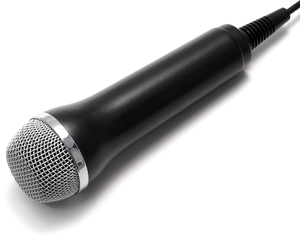Difference between revisions of "Microphone"
| Line 47: | Line 47: | ||
:[https://www.amazon.co.uk/gp/product/1782948163/ref=as_li_tl?ie=UTF8&camp=1634&creative=6738&creativeASIN=1782948163&linkCode=as2&tag=nrjc-21&linkId=0fdbfd5dd397d6e24a9dfb250f08587f ''Microphones, page 284, GCSE Physics, CGP, Edexcel ''] | :[https://www.amazon.co.uk/gp/product/1782948163/ref=as_li_tl?ie=UTF8&camp=1634&creative=6738&creativeASIN=1782948163&linkCode=as2&tag=nrjc-21&linkId=0fdbfd5dd397d6e24a9dfb250f08587f ''Microphones, page 284, GCSE Physics, CGP, Edexcel ''] | ||
:[https://www.amazon.co.uk/gp/product/1782945733/ref=as_li_tl?ie=UTF8&camp=1634&creative=6738&creativeASIN=1782945733&linkCode=as2&tag=nrjc-21&linkId=2a2dbec9db6bf5766c0458d908fa0a52 ''Microphones, page 90, GCSE Physics; The Revision Guide, CGP, Edexcel ''] | :[https://www.amazon.co.uk/gp/product/1782945733/ref=as_li_tl?ie=UTF8&camp=1634&creative=6738&creativeASIN=1782945733&linkCode=as2&tag=nrjc-21&linkId=2a2dbec9db6bf5766c0458d908fa0a52 ''Microphones, page 90, GCSE Physics; The Revision Guide, CGP, Edexcel ''] | ||
| + | |||
| + | ====OCR==== | ||
| + | :[https://www.amazon.co.uk/gp/product/1782945687/ref=as_li_tl?ie=UTF8&camp=1634&creative=6738&creativeASIN=1782945687&linkCode=as2&tag=nrjc-21&linkId=9a598e52189317a20311d7a632747bc9 ''Microphones, page 56, Gateway GCSE Physics; The Revision Guide, CGP, OCR ''] | ||
| + | :[https://www.amazon.co.uk/gp/product/0198359837/ref=as_li_tl?ie=UTF8&camp=1634&creative=6738&creativeASIN=0198359837&linkCode=as2&tag=nrjc-21&linkId=3c4229e8b023b2b60768e7ea2307cc6f ''Microphones, pages 136-137, 145, 148, Gateway GCSE Physics, Oxford, OCR ''] | ||
Latest revision as of 06:03, 15 December 2019
Contents
Key Stage 3
Meaning

A picture of a microphone.
A microphone is an electrical device that turns the vibration of a sound into an electrical signal.
About Microphones
- Sound transfers information which a microphone converts into an electrical signal.
- Microphones use a coil of wire and a permanent magnet to turn a vibration into an electrical signal.
- When the receiver vibrates the coil of wire moves around the permanent magnet to make a current in the coil of wire.
| A diagram of a microphone. |
Key Stage 4
Meaning

A picture of a microphone.
A microphone is an electrical device that turns the vibration of a sound into an electrical signal using the generator effect.
About Microphones
- Sound transfers information which a microphone converts into an electrical signal.
- Microphones use a coil of wire and a permanent magnet to induce a current in the coil when receiver vibrates.
- When the receiver vibrates the coil of wire moves around the permanent magnet to make a current in the coil of wire.
| A diagram of a microphone. |
References
AQA
- Microphone, moving-coil, pages 195, 262, GCSE Physics; Student Book, Collins, AQA
- Microphones, page 225, GCSE Physics; Third Edition, Oxford University Press, AQA
- Microphones, page 235, GCSE Physics, Hodder, AQA
- Microphones, page 307, GCSE Physics; The Complete 9-1 Course for AQA, CGP, AQA
- Microphones, page 97, GCSE Physics; The Revision Guide, CGP, AQA
Edexcel
- Microphones, page 175, GCSE Physics, Pearson Edexcel
- Microphones, page 284, GCSE Physics, CGP, Edexcel
- Microphones, page 90, GCSE Physics; The Revision Guide, CGP, Edexcel
